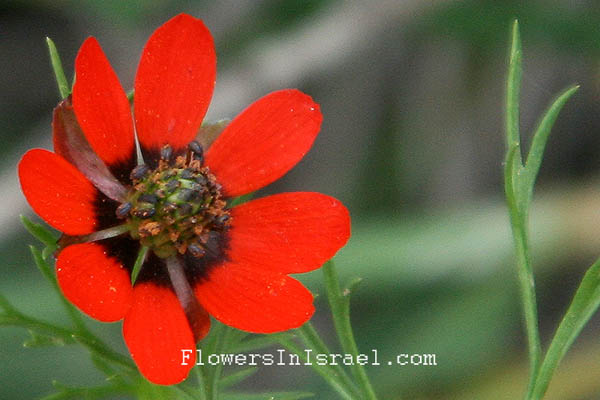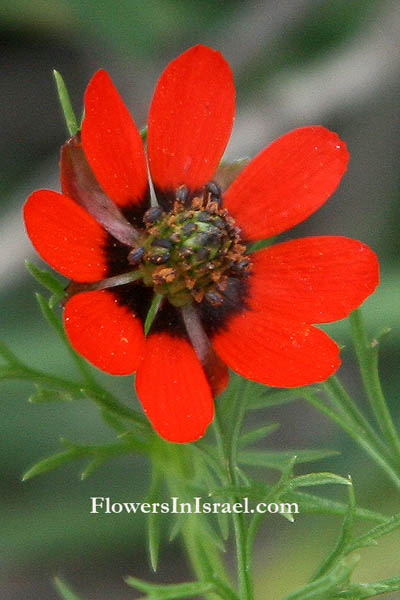Palestine Pheasant's Eye,
Hebrew: דמומית ארץ-ישראלית, Arabic: الأدونيس الفلسطيني
| Scientific name: | Adonis palaestinaBoiss. | |
| Synonym name: | Adonis aestivalis L. | |
| Common name: | Palestine Pheasant's Eye | |
| Hebrew name: | דמומית ארץ-ישראלית | |
| Arabic name: | الأدونيس الفلسطيني | |
| Family: | Ranunculaceae, נוריתיים |

|
| Life form: | Annual | |
| Leaves: | Alternate, dissected twice or more, dentate or serrate | |
| Flowers: | Red | |
| Flowering Period: | February, March, April | |
| Habitat: | Batha, Phrygana | |
| Distribution: | The Mediterranean Woodlands and Shrublands, Semi-steppe shrublands | |
| Chorotype: | Mediterranean | |
| Summer shedding: | Ephemeral |

Derivation of the botanical name: Adonis, Αδωνιϛ, ιδοϛ, "god of plants", the Greek classical name; in Greek legend Adonis was a beautiful youth loved by both Aphrodite and Persephone "when Adonis died Zeus decreed that he should spend winters in the underworld with Persephone and spend summers with Aphrodite" Then, it came to pass that a boar killed Adonis. Upon learning the news, Aphrodite shed as many tears as the blood drops that had fallen from Adonis’s body. A rose bush grew from each one of Aphrodite’s tears, and a plant of that name from each drop of blood. palaestina, Palestine, Eretz-Israel, Israel. The Hebrew word:דמומית, dmumit, from דם, blood. The Hebrew name refers to the red color as the blood of the flowers, in French, l'adonis goutte-de-sang, which means "drop of blood".
According to H.B.Tristram, the true "floral glories of Palestine" are the pheasant's eye (Adonis palaestina), the ranunuculus (R. Asiaticus), and the anemone (A. coronaria). |